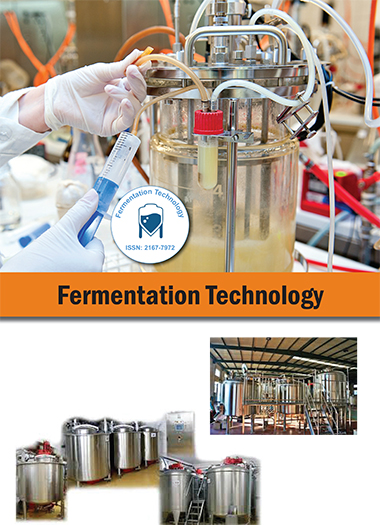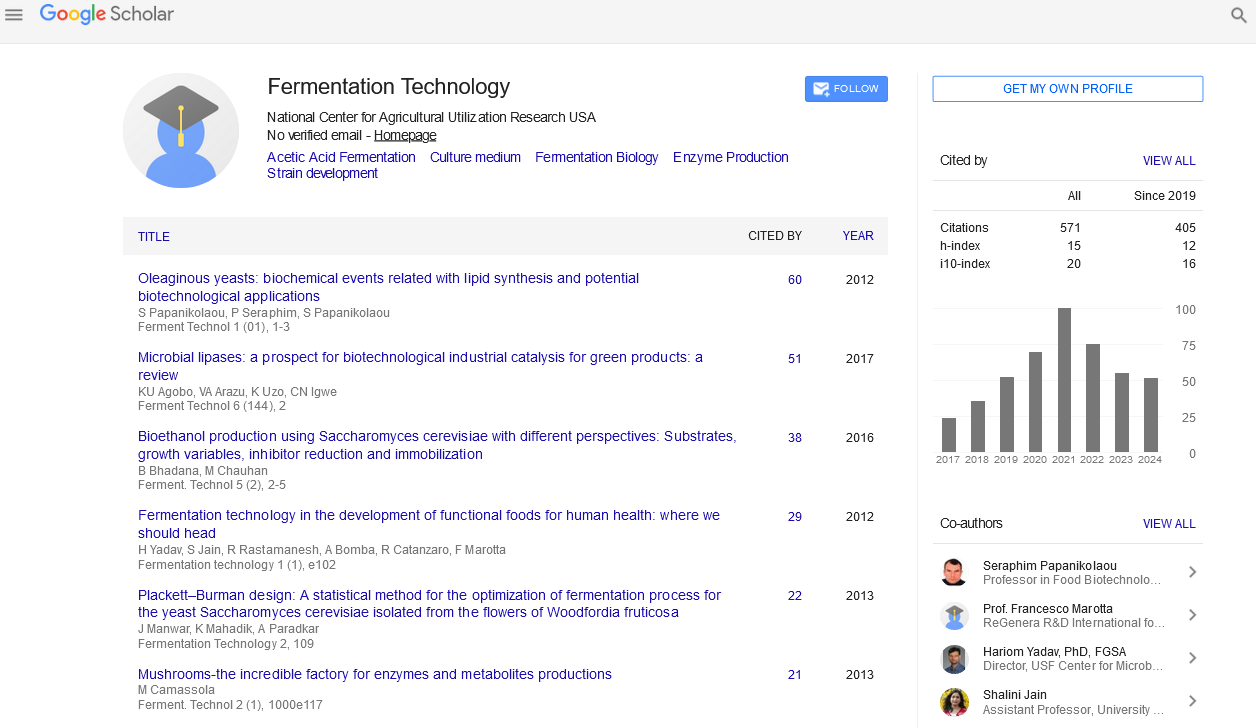Indexed In
- Open J Gate
- Genamics JournalSeek
- Access to Global Online Research in Agriculture (AGORA)
- RefSeek
- Hamdard University
- EBSCO A-Z
- OCLC- WorldCat
- Publons
Useful Links
Share This Page
Journal Flyer

Open Access Journals
- Agri and Aquaculture
- Biochemistry
- Bioinformatics & Systems Biology
- Business & Management
- Chemistry
- Clinical Sciences
- Engineering
- Food & Nutrition
- General Science
- Genetics & Molecular Biology
- Immunology & Microbiology
- Medical Sciences
- Neuroscience & Psychology
- Nursing & Health Care
- Pharmaceutical Sciences
Lactobacilli: New players for the management of diabesity
World Congress on Beneficial Microbes: Food, Pharma, Aqua & Beverages Industry
August 25-27, 2015 Valencia, Spain
Manpreet Kaur, Priti Devi, Monica Puniya and Anil Kumar Puniya
National Dairy Research Institute, India
Posters-Accepted Abstracts: Ferment Technol
Abstract:
Being a couch potato leads to the spread of silent assassins in the form of lifestyle diseases throughout the world with diabetes and obesity as major visage. Diabesity describes diabetes in the context of obesity sometimes referred to as obesity-dependent diabetes. Recently, it has been recognized as a major public health problem and also integral components of metabolic syndrome. The role of glucosidase inhibitory lactobacilli in relation to diabetes and pancreatic lipase inhibitory lactobacilli in relation to obesity is yet to be explored. The present study was aimed to focus that how the probiotic lactobacilli can be used to treat the diabesity through the enzyme inhibitory activity. For that, lactobacilli sp. to inhibit pancreatic lipase and glucosidase were isolated from the different sources. Samples were enriched in MRS broth for 24 hours at 37oC. Isolation was carried out using pour plating of enriched sample in LAMVAB and BCP-MRS agar. Gram positive and catalase negative rods were selected for genomic DNA extraction and cultures were confirmed as lactobacilli through genus specific PCR. Preliminary identification was done for non-lipase producers and non glucosidase producers, selected isolates were subjected to the inhibitory activity for both the enzymes. Out of 52 isolates, 20 cultures were found to be negative for lipase production and 11 cultures were found to be negative for glucosidase. For enzyme inhibitory activity, 11 cultures were showing pancreatic lipase inhibitory activity and 9 cultures were showing glucosidase inhibitory activity. Among them 5 cultures were showing good probiotic attributes in vitro (acid tolerance, bile tolerance, cell auto-aggregation ability, cell surface hydrophobicity, bile salt hydrolase (BSH) activity, antimicrobial activity, antibiotic susceptibility) were done followed by antioxidative potential (ABTS, DPPH and FRAP) for both the activities and were confirmed by species specific PCR. Therefore, it is suggested that pancreatic lipase inhibitory and glucosidase inhibitory probiotics can be used as the new players for controlling diabesity although more interventions need to be done in-vitro and in vivo for clinical use.
Biography :
Email: preetman.micro@gmail.com

